
iShares MSCI USA Momentum Factor ETF (MTUM)
Momentum is one of the oldest and most studied factor anomalies exhibited within the capital markets. What is price momentum, after all? Put simply, it is most related to velocity or the rate of change. Investors often utilize the terms “trend” and “momentum” interchangeably, although they are wholly different characteristics. The trend is directional (think North, South, East, West), while momentum is the speed of that direction.
Investors tend to have a very hot and cold attitude toward momentum. When markets are rising, they want all they can get; when they are falling, high momentum stocks are usually at the front row of the firing line. Google search trends in the Finance category over the past five years visualize this highly cyclical attitude quite well.
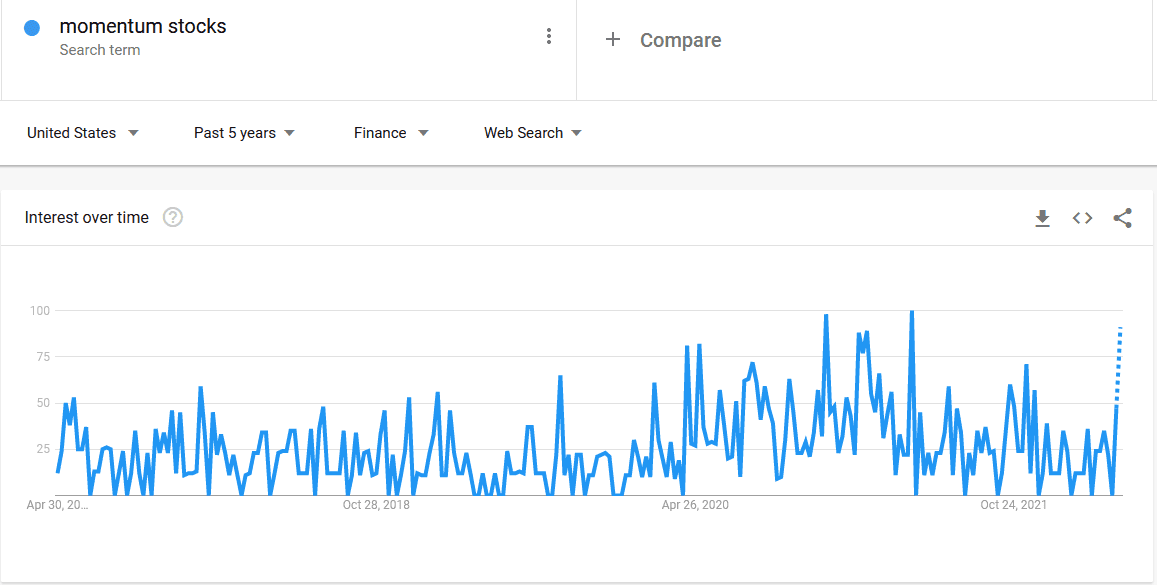
*Data via Google Trends as of 4/27/22
Before we dive into the holdings, it’s important to lay some groundwork around the term momentum and how it’s used in practice and academia alike. There are two types of momentum—to make things more confusing for investors (a commonality in the Finance industry), which are absolute and relative. Absolute momentum is focused on an asset’s rate of change exclusive of any other characteristics, while relative momentum is focused on an asset’s rate of change relative to a benchmark’s rate of change.
iShares defines MTUM’s strategy as the following: “The iShares MSCI USA Momentum Factor ETF seeks to track the investment results of an index composed of U.S. large- and mid-capitalization stocks exhibiting relatively higher price momentum.” While the term “relatively higher price momentum” is loosely defined, the product brief lists the objective as “To determine the trending stocks that are outperforming their peers.” The keyword in the two objective statements that we want to focus on is relative. While iShares never lists the secret recipe for the momentum screen, much of the work is based on Jegadeesh and Titman’s 1993 Journal of Finance Article “Returns to Buying Winners and Selling Losers: Implications for Stock Market Efficiency.”
Currently, MTUM’s weighted overlap in holdings with the S&P 500 (SPY) is currently sitting at 27%. It should be noted that MTUM rebalancing semi-annually with the next rebalance coming up in May, so this could change significantly.
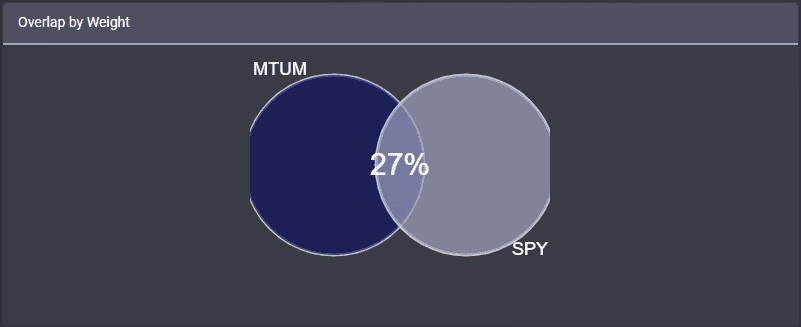
*Data via ETFRC.com 4/27/22
An important point of distinction in MTUM’s top 10 holdings vs. the S&P 500 (SPY) is that while SPY has a larger holding in its top stock relative to MTUM but a higher percentage of MTUM’S assets are located in the top ten holdings.

*Data via fundvisualizer.com as of 3/31/22
Looking into the sector weightings, MTUM also has higher overweighs in both Technology and Financial Services, while there are underweights in defensive sectors like Real Estate and Utilities. Investors should note that nearly one-third of MTUM’s holdings are currently in the Technology sector, vs. nearly one-fourth in the SPY.
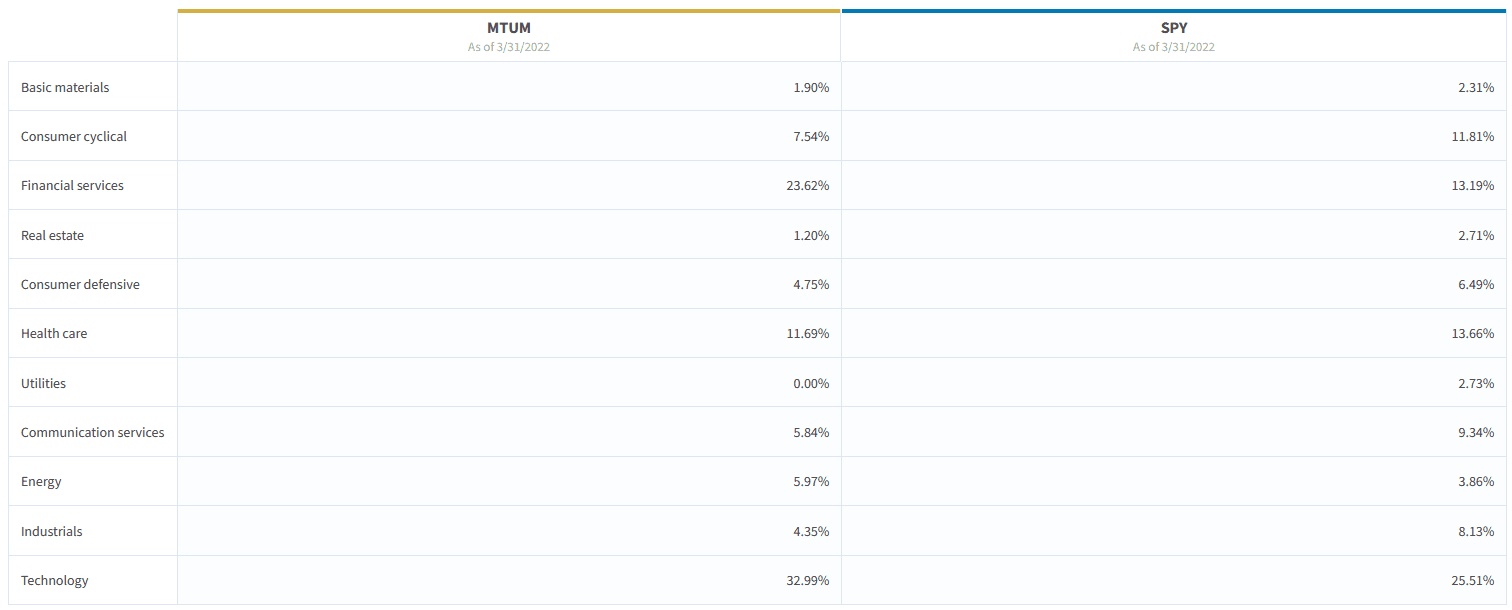
*Data via fundvisualizer.com as of 3/31/22
Much of MTUM’s performance since 2014 has been tied to Large Cap Growth. Intuitively, this makes sense, as Large Cap Growth has been one of the best performing areas of the market since that time period. As such, it has often checked the Large Cap Growth style box more often than not. However, investors should be aware that there are no factor constraints in the portfolio, as it is focused on the stocks with the highest momentum over a combination of the past six and twelve months, and style exposure can drift dramatically with each semi-annual rebalancing.

*Data via portfoliovisualizer.com as of 3/31/22
While MTUM has generally outperformed the SPY since 2014, it has been struggling year-to-date and is currently in a deeper drawdown. A large part of this has been the outsized exposure to Technology, which has been one of the worst-performing areas of the markets in the past several months.
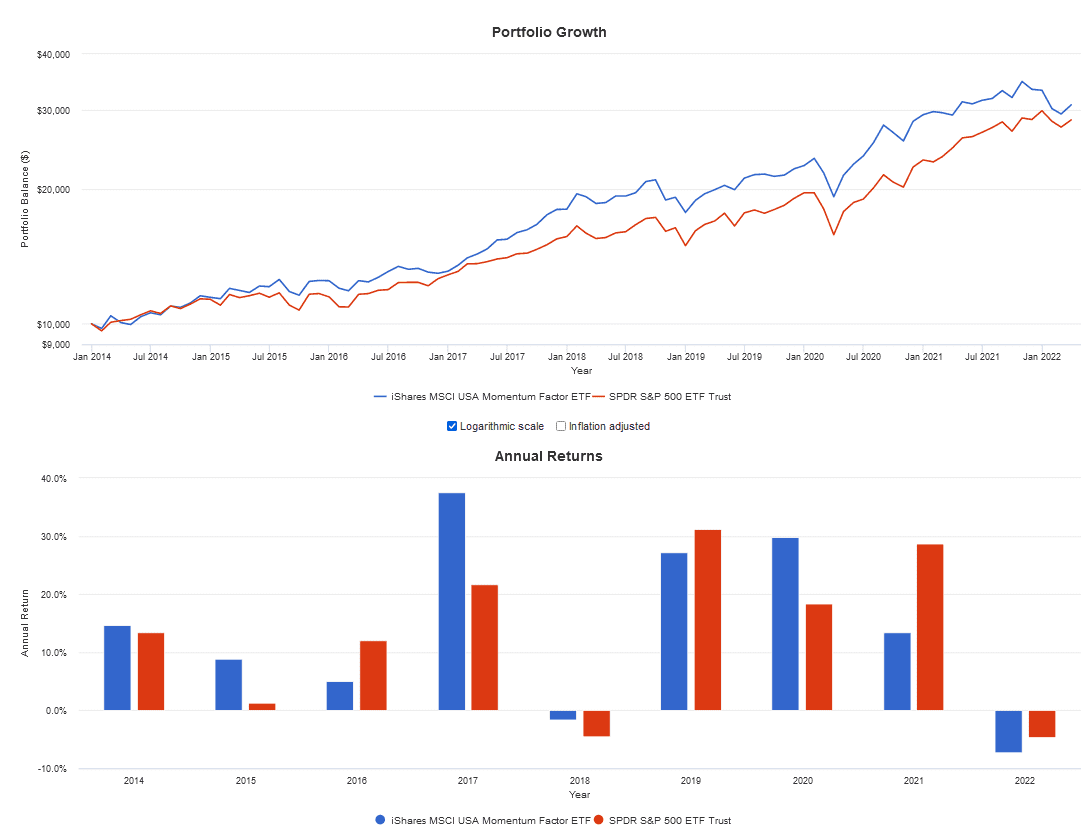
*Data via portfoliovisualizer.com as of 3/31/22
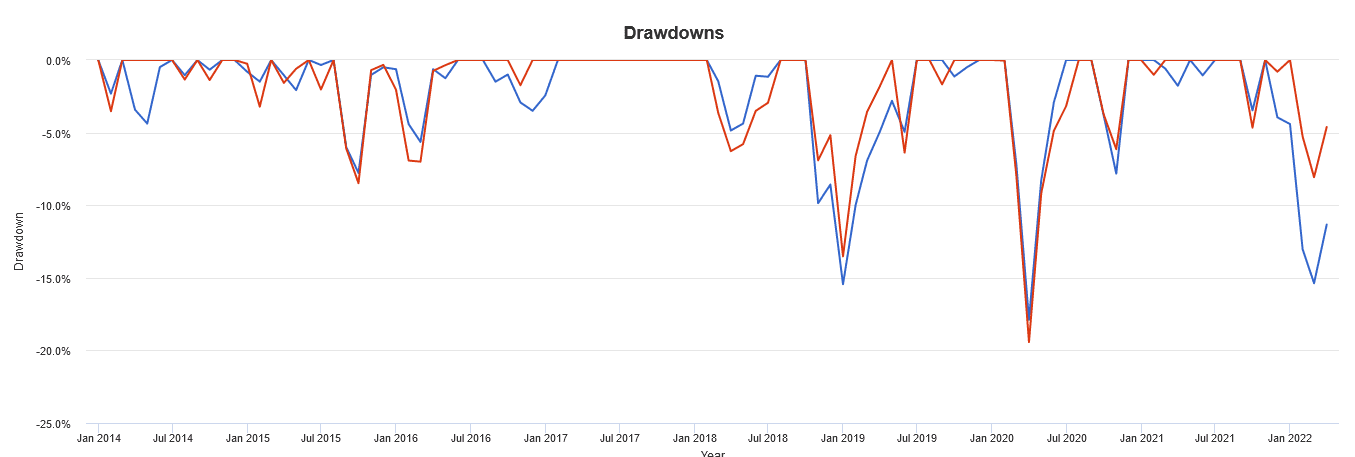
*Data via portfoliovisualizer.com as of 3/31/22
Disclosure: This information is prepared for general information only and should not be considered as individual investment advice nor as a solicitation to buy or offer to sell any securities. This material does not constitute any representation as to the suitability or appropriateness of any investment advisory program or security. Please visit our FULL DISCLOSURE page.
